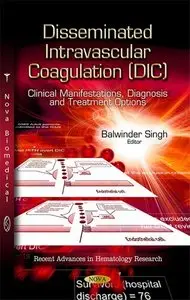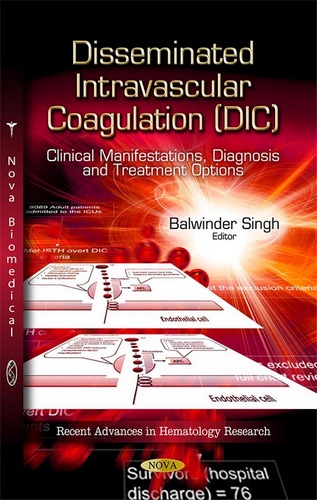Disseminated Intravascular Coagulation (DIC): Clinical Manifestations, Diagnosis and Treatment Options (Recent Advances in Hematology Research) by Balwinder Singh
2013 | ISBN: 1629483230 | English | 192 pages | PDF | 4 MB
2013 | ISBN: 1629483230 | English | 192 pages | PDF | 4 MB
Disseminated Intravascular Coagulation is a devastating syndrome characterized by the systemic activation of widespread activation of the coagulation cascade and thrombosis, which may result in severe bleeding and may lead to organ failure. Recent studies have shown that the incidence of DIC is decreasing, especially in men. Despite the improvements in health care delivery, the morbidity and mortality due to DIC remains very high. Early diagnosis and accurate prognosis are important in improving the outcomes of patients with DIC.
However, there is a lack of a gold standard diagnostic test to diagnose DIC and there is a scarcity of treatment or management strategies. Therefore, an understanding of the pathophysiology, ability to diagnose the DIC syndrome and to treat early, is the key. This book provides an important timely update on the clinical manifestations, important risk factors, and treatment strategies for DIC, and provides in-depth information on pathophysiological aspects and various diagnostic scores used to diagnose DIC. Furthermore, we focused on certain important factors related to DIC such as Sepsis, chronic DIC in cancer patients, coagulopathy of liver disorders vs DIC, and DIC in urological malignancies.
In addition, this book provides evidence from an important study determining the predictors influencing the hospital mortality rates of the critically ill patients with DIC. This book offers a wide scope of information for physicians in all fields, whether they are intensivists, primary care physicians or oncologists, this will be an important source for identifying the DIC syndrome early, and the appropriate steps to improve patient outcomes will be taken sooner.



